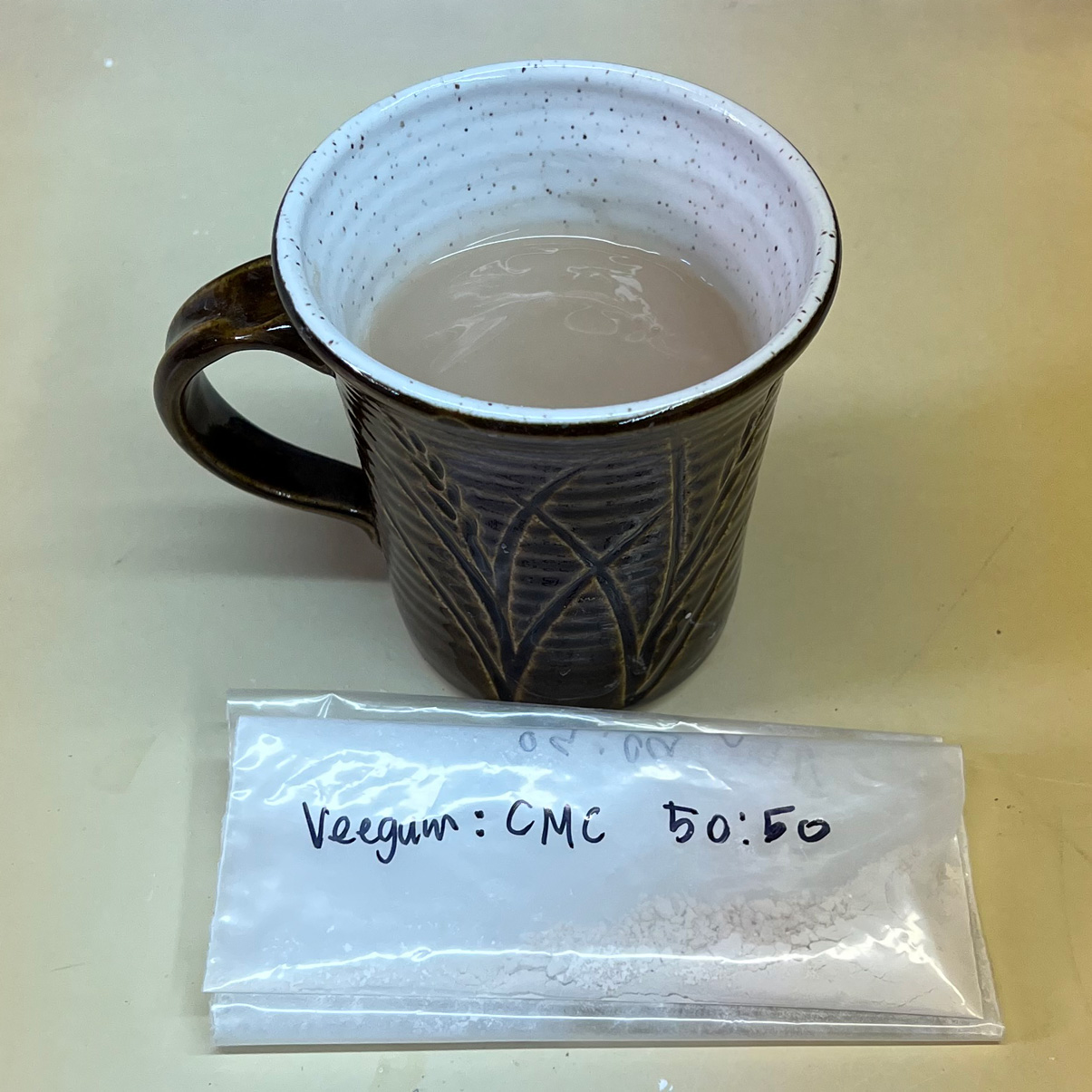| Monthly Tech-Tip | No tracking! No ads! | |
You may know Veegum T but do you know VeeGum CER?
The glaze in this jar was 'goop', impossible to paint on because it was too viscous. And it dried way too fast. Laguna mentions adding water so I measured the specific gravity (SG): 1.7. That is super-high, it took a 125cc addition to bring it down to 1.5, but it was still thick, dried even faster, and brushing it on evenly was even harder. It was not obvious what to do next. It needed a lot more water (1.3-1.35 SG is normal for multi-layer application of low SG glazes), adding CMC gum and enough water to do that would produce an unusable watery and sticky slurry. Veegum CER to the rescue! It is a 50:50 mix of CMC gum and Veegum T. The former slows drying and hardens, the latter gels. So it can simply be added until the painting properties are right. And, a Veegum CER solution is easier to handle than one of CMC gum. The brushing properties are just right, it gels nicely on standing and stays in place on verticals. CER is also good for highly fritted dipping glazes or others lacking in clay content (otherwise CMC might still be better).
Related Pictures
Veegum CER Saturated suspension

This picture has its own page with more detail, click here to see it.
This is the most viscous suspension we can make using hot water and a propeller mixer - 300ml water with 13.25g Veegum CER. In glazes having low clay content adding this gels the slurry, enabling higher water content to improve its brushing properties and slow down drying. In slurries having plenty of clay pure CMC gum is usually better (unless a high-water-content slurry is needed). Of course, keep in mind that anything with CMC gum can be subject to microbial attack.
Videos
Links
| Glossary |
Base-Coat Dipping Glaze
These are ceramic glazes intended for dipping but which contain a gum to enable them to adhere to the body better and tolerate over-layers without danger of flaking or cracking. |
| Glossary |
Brushing Glaze
Hobbyists and increasing numbers of potters use commercial paint-on glazes. It's convenient, there are lots of visual effects. There are also issues compared to dipping glazes. You can also make your own. |
| Materials |
Veegum
A clay of incredibly small particle size. It has the highest plasticity of any known clay and acts as a suspending and gelling agent in slurries. |
Got a Question?
Buy me a coffee and we can talk

https://digitalfire.com, All Rights Reserved
Privacy Policy

